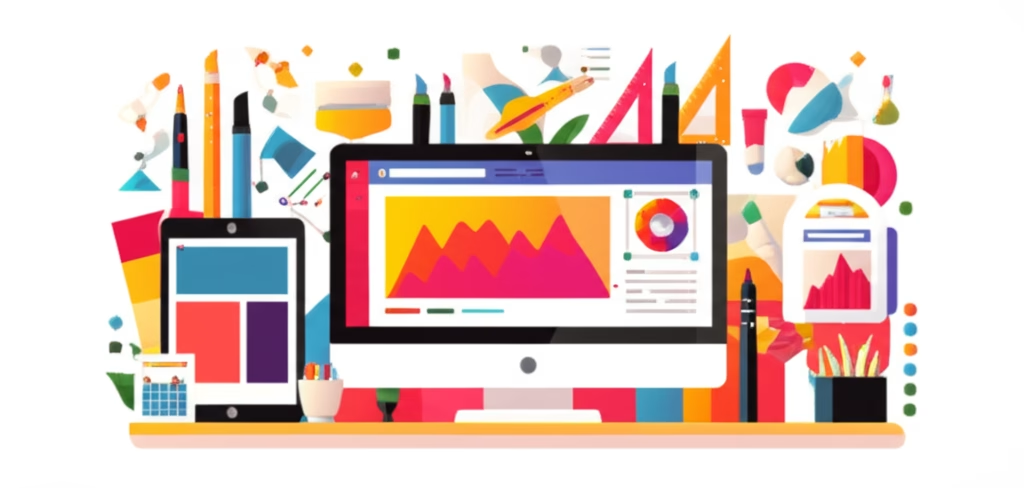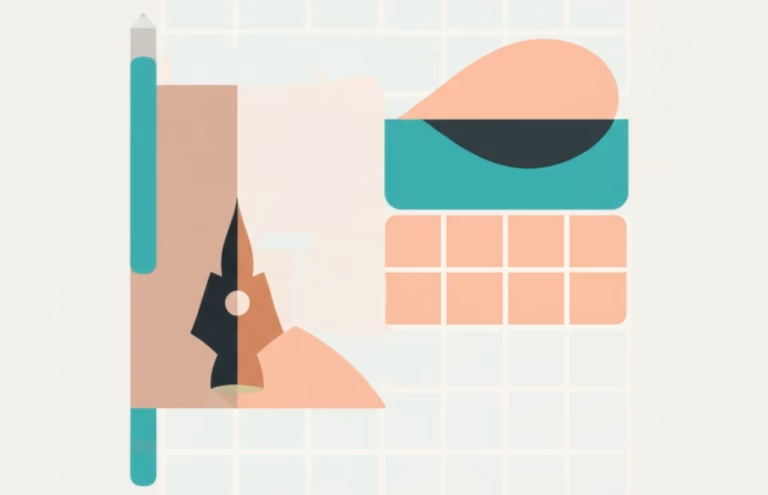The Challenge Every Designer Faces
Feeling ready to create something beautiful but staring at a blank screen? Many aspiring designers feel this way. It’s exciting to think about bringing ideas to life visually, but knowing where to begin can feel overwhelming. You might wonder about complex software, artistic talent, or hidden rules only pros know.
This feeling of being stuck is common. The good news is that starting your design journey doesn’t require magic or years of art school. It begins with simple steps and understanding a few core ideas. We’ll explore how to overcome that initial hurdle and start creating today.
You’ll discover practical ways to approach your first projects, build confidence, and turn that blank screen into a canvas for your creativity. Let’s make starting design simple and fun, focusing on practical, easy design tips.
Table of Contents
The Science Behind Starting Design
Good design isn’t just about making things look pretty. There’s a method to the visual harmony you see in effective designs. It taps into how our brains process information and perceive beauty. Certain arrangements of elements feel more pleasing or easier to understand because they follow principles our minds naturally respond to.
Think about why some signs catch your eye instantly, while others blend into the background. It’s often because the effective ones use contrast, clear spacing, and logical layout. Understanding these basic ideas, the “why” behind good design, helps you create intentionally, not just randomly.
It’s about guiding the viewer’s eye, creating focus, and communicating a message effectively. These aren’t complicated scientific formulas, but rather simple observations about human perception applied visually. Learning these basics is key when you start designing.
Fundamental Principles
Contrast: This means making elements stand out from each other. It could be light text on a dark background, a large title next to smaller body text, or using different colors. Good contrast makes your design readable and helps organize information visually.
Repetition: Using the same design elements more than once throughout a design creates consistency and a sense of unity. This could be repeating a specific font, color, shape, or spacing pattern. Repetition makes your design look cohesive and professional.
Alignment: This is about arranging elements so their edges line up neatly. Aligning text and objects creates order and makes your design look clean and organized. It helps viewers scan information easily without their eyes jumping around.
Practical Strategies for Starting Design
Ready to put some ideas into practice? Here are some straightforward strategies to help you dive in without feeling overwhelmed. These are designed for anyone looking for beginner design advice.
- Embrace Simplicity: When starting, don’t try to use every color, font, or shape you know. Begin with a limited palette – maybe two fonts and three colors. Focus on arranging simple elements like text blocks, basic shapes, and images cleanly. Simplicity helps you understand the impact of each element without clutter. This is a core part of understanding graphic design basics.
- Seek Inspiration, Don’t Copy: Look at designs you admire – websites, posters, packaging. Analyze *why* they work. Is it the color scheme? The way the text is arranged? Use these observations as inspiration for your own projects, but always strive to create something original based on what you learned. This helps you build a visual library.
- Master One Thing First: Instead of trying to learn everything at once, pick one element to focus on. For example, spend a week just practicing typography – arranging text, choosing font pairings, and playing with size and spacing. Then, move on to colors, or layout. Breaking it down makes it less daunting and helps you build skills incrementally.
- Practice Regularly with Simple Tools: You don’t need expensive software to start. Many free online tools offer basic design functions. The key is consistent practice. Spend a little time each day or week creating something small, even if it’s just arranging text and a photo for a mock social media post. Regular practice builds confidence and skill. These are essential design tips for anyone beginning their journey.
Real Cases: When Starting Design Goes Wrong
Learning from mistakes is a huge part of the design process. Even experienced designers face challenges. For beginners, recognizing common pitfalls early can save frustration and help you improve faster. Let’s look at a couple of scenarios where initial design efforts might not hit the mark and what we can learn.
Case 1: The “Everything Included” Design
Problem: A beginner designer is excited and tries to use bright colors, multiple clashing fonts, various photo effects, and different graphic styles all in one small project, like a flyer. The result is chaotic, hard to read, and doesn’t have a clear message. It looks busy and unprofessional.
Lesson: Less is often more, especially when you are starting out. Overcrowding a design with too many elements, colors, or fonts dilutes the message and overwhelms the viewer. Focus on clarity and simplicity first. Stick to a limited color palette, one or two font families, and only include elements that serve a purpose. This is a crucial easy design tip.
Case 2: Ignoring Readability
Problem: Someone creates a beautiful background image but places text directly over it without considering contrast. The text color is too similar to the background color, or the background is too busy behind the text. The message, no matter how important, is impossible to read clearly.
Lesson: Design must be functional. If your audience can’t read the information, the design fails its primary purpose. Always ensure sufficient contrast between text and its background. Use overlays, text boxes, or shadows if needed to make text pop. Readability is non-negotiable in good design.
Your Action Plan for Starting Design
Taking action is the most important step. Reading about design is great, but doing is how you learn and grow. Here is a simple plan to help you move from thinking about design to actually creating. This plan incorporates practical design tips to get you going.
This structured approach makes the goal of learning to design feel achievable and less intimidating.
- Today: Choose one of the simple strategies we discussed, like “Embrace Simplicity.” Find a free online design tool or even just use presentation software you already have. Create a very simple design, perhaps just arranging a title and a few lines of text with one or two colors. Focus *only* on keeping it clean and readable. This immediate action helps you overcome inertia and start designing right away.
- This Week: Complete a small, defined project using your chosen strategy. This could be designing a mock social media post, a simple digital card, or a basic header image. Limit your time on it to avoid getting stuck. The goal is completion and practice, not perfection. Apply those graphic design basics you’re learning.
- This Month: Experiment with a new basic principle or tool feature. If you focused on simplicity, now try incorporating the principle of alignment into your next small project. Or, learn one new function in your design software, like how to use layers or group objects. This expands your skillset gradually.
- Next 3 Months: Aim to complete a few small practice projects each month. Start building a folder (even just for yourself) of these practice pieces. Look back at your earlier work to see your progress. Consider asking a friend whose opinion you trust for gentle feedback on one piece. This consistent effort is key to mastering beginner design skills.
Clear Your Doubts about Starting Design
It’s natural to have questions when you’re learning something new. Here are a couple of common doubts aspiring designers face, with straightforward answers to help you feel more confident as you begin.
Having clarity on these points helps demystify the process and makes starting less intimidating. Don’t let these common concerns hold you back from exploring your creativity.
Q: Do I need expensive software like Adobe Photoshop or Illustrator to start designing?
A: Absolutely not! There are many excellent free design tools available online, such as Canva, Figma (for UI/UX), or even GIMP (a free Photoshop alternative). Start with a free tool to learn the basics before investing in professional software.
Q: How do I know if my design looks good or is effective?
A: Judge your design by its clarity and purpose. Does it communicate the intended message clearly? Is it easy to read and understand? Compare it to examples of good design in a similar category. Getting feedback from others can also provide valuable perspective.
The Next Step in Your Journey
Starting your design journey is an exciting step. Remember that every experienced designer was once a beginner. The key is to start, practice consistently, and keep learning. Don’t be afraid to experiment and make mistakes; they are part of the process.
These easy design tips are just the beginning. As you become more comfortable, you can explore more complex principles and techniques. Your creativity will flourish with practice and patience.
Continue evolving with our guide about How to Start Designing Today!



